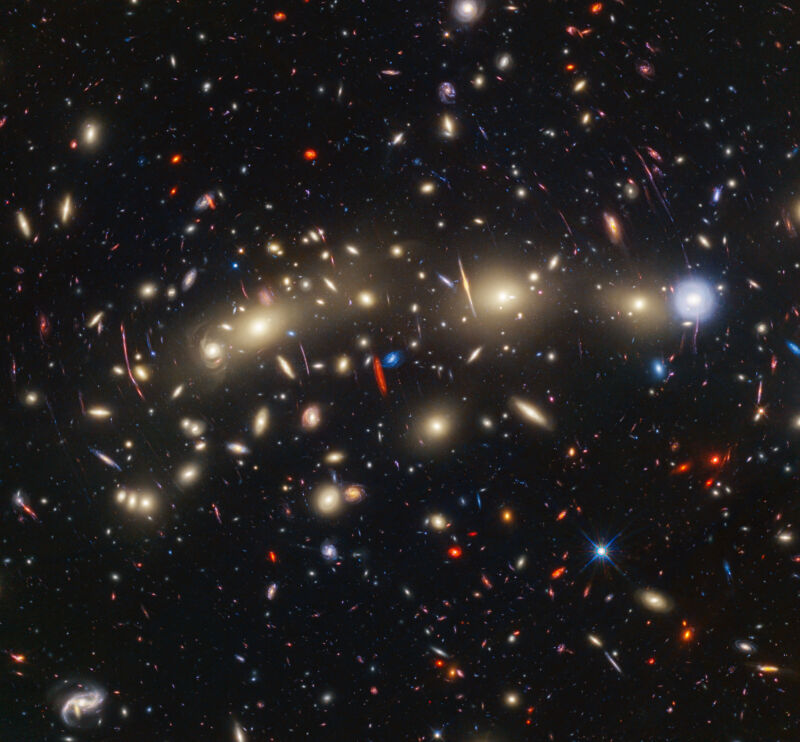
Good morning. It is November 13, and today we're traveling 4.3 billion light-years away from Earth, to a cluster of galaxies known as MACS0416. This distant object, which turns out to be two galaxy clusters that are colliding with one another, was first discovered in images captured by the Hubble Space Telescope.
Hubble, of course, brought "deep field" astronomy alive by publishing images with thousands of galaxies. Now, by combining Hubble observations with the new James Webb Space Telescope, NASA and its partners have produced an even deeper field image. The resulting panchromatic image, which combines visible and infrared light, gives us one of the most comprehensive views of the Universe ever obtained.
Here's a little bit more from NASA about how this image was composed:
To make the image, in general the shortest wavelengths of light were colour-coded blue, the longest wavelengths red, and intermediate wavelengths green. The broad range of wavelengths, from 0.4 to 5 microns, yields a particularly vivid landscape of galaxies.
Those colours give clues to galaxy distances: the bluest galaxies are relatively nearby and often show intense star formation, as best detected by Hubble, while the redder galaxies tend to be more distant and are best detected by Webb. Some galaxies also appear very red because they contain copious amounts of cosmic dust that tends to absorb bluer colours of starlight.
If this all makes you feel a little bit smaller, that's OK.
Source: NASA, ESA, CSA, STScI.



3175x175(CURRENT).thumb.jpg.b05acc060982b36f5891ba728e6d953c.jpg)
Recommended Comments
There are no comments to display.
Join the conversation
You can post now and register later. If you have an account, sign in now to post with your account.
Note: Your post will require moderator approval before it will be visible.